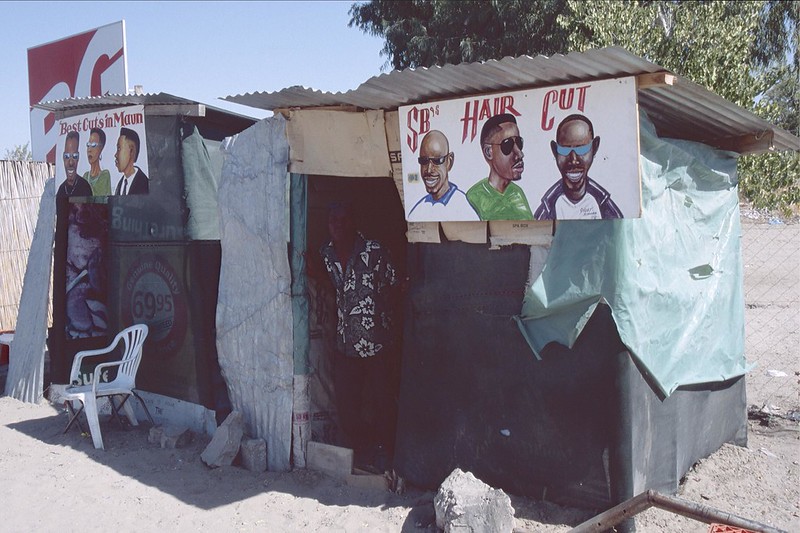Botswana is best known for four things
 |
| Botswana Bushmen or San community |
What is Botswana best known for; diamonds, beef cattle, tourism, and minerals are the cornerstones.
10 Interesting Facts Photos Information About Botswana
1. Botswana population is around 2 million people.
2. Citizens of Botswana are known as Batswana.
3. While English is the official language and Setswana the national language, there are over 20 other languages spoken in Botswana.
4. In 1867 European gold prospectors arrive, mining begins. In 1885, British proclaim a protectorate called Bechuanaland.
5. Botswana adopted its new name at independence in 1966.
6. Sparsely populated, Botswana protects some of Africa's largest areas of wilderness.
7. The Okavango swamps form the world's largest inland delta.
8. In Botswana, Safari-based tourism is an important source of income.
9. Botswana is the world's largest producer of diamonds.
10. In 2015 HIV infection rate fell to 22.2%; Botswana no longer has the world's highest rate of infection for ages 15-49.
Botswana's semiarid climate and its scarce water resources remain prominent obstacles to its economic development. Botswana is not agriculturally self-sufficient, Zimbabwe and South Africa are the major commercial suppliers of food for the country.
Approximately 12 percent of Botswana's people are employed in the formal sector. Other important employment sectors were commerce about 15 percent of the jobs, services 10 percent, construction 10 percent, manufacturing 9 percent, and mining 6 percent. Another 15 percent of the formal sector workforce is employed in South African mines.
Minerals are another driving force of Botswana's economy and diamonds are by far its largest foreign currency earning export. The country is one of the world's three largest producers of diamonds along with South Africa and the Soviet Union.
The De Beers Group Debswana Diamond Company was established in 1969 and the Government of the Republic of Botswana and The De Beers Group of Companies own it in equal shares. It is one of the world's leading diamond producers by value and volume. Debswana operates four diamond mines in Orapa, Letlhakane, Damtshaa and Jwaneng.
Jwaneng Mine, discovered in 1972 is the richest diamond mine in the world due to its higher dollar per carat obtained for its gems. Orapa is a conventional open-pit mine, situated 240 km west of Francistown. The Mine was discovered in 1967 by a team of De Beers geologists led by Manfred Marx. It became fully operational in July 1971.
Letlhakane Mine in Central, Botswana was first discovered during the sampling and evaluation process at Orapa became Debswana's second mine when it opened in 1975.Open-pit operations at Letlhakane Mine ceased in 2017 becoming a plant for processing of Kimberlite tailings also are known as mine waste until 2043.
Botswana undoubtedly possesses mineral resources which have not yet been discovered. Various studies are being undertaken to determine the existence and exploitability of possible petrochemical resources in the west of the country.
Platinum bearing formations currently being mined just over the border in South Africa may extend into Botswana. Recent findings suggest that some geologic structures in Botswana may contain extensive gold deposits. Mineral exploration continues in many areas.
Although it was one of the world's poorest countries at independence, Botswana has achieved rapid economic growth. With over 60 Tourist Attractions, tourism is the leading earner for the Botswana economy. Through financial leadership, Botswana transformed itself from one of the poorest countries in the world to a middle-income country by 2016.
Botswana Tourist Attractions in the Eastern and Central Region
• Francistown • Selebi-Phikwe • Solomon's Wall • Lepokole Hills • Tswapong Hills • Moremi Gorge • Motlhabaneng Rock Paintings • Letsibogo Dam • Khama Rhino Sanctuary • Shoshong Hills • Khama III Memorial Museum • Supa Ngwao Museum • Khama Royal Residence and Cemetery • Mashatu Game Reserve
Botswana Tourist Attractions in the Kgalagadi Region
• Ghanzi • Central Kalahari Game Reserve • Deception Valley • Ghanzi Craft • Kgalagadi Transfrontier Park • Khutse Game Reserve • Kuru Museum and Cultural Centre
Botswana Tourist Attractions in the Makgadikgadi and Nxai Pans Regions
• Nata • Ntwetwe Pan • Kubu Island • Nata Bird Sanctuary • Makgadikgadi and Nxai Pan National Park • Sowa Pan • Makgadikgadi Pans National Park • Nxai Pan National Park • Baines Baobab
Botswana Tourist Attractions in the Chobe Region
• Kasane • Chobe National Park • Seboba Water Rapids • Pandamatenga Farms • Lesoma Memorial Monument • Kasane Hot Springs • Chobe River
Botswana Tourist Attractions in the Moremi and Okavango Regions
• Maun • Tsodilo Hills • Moremi Game Reserve • Gchwihaba (Drotsky's) Caves • Aha Hills • Nhabe Museum
 |
| Botswana flag and Coat of Arms |
Historical African Country Name
Top 20 Largest Countries in Africa
How many countries does Africa have?





























